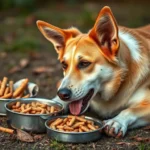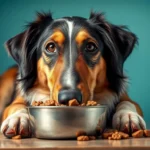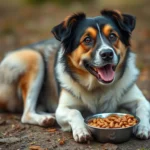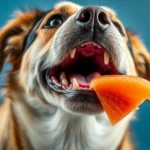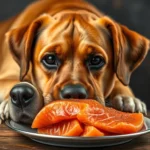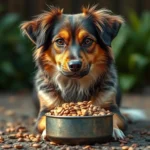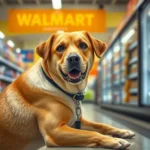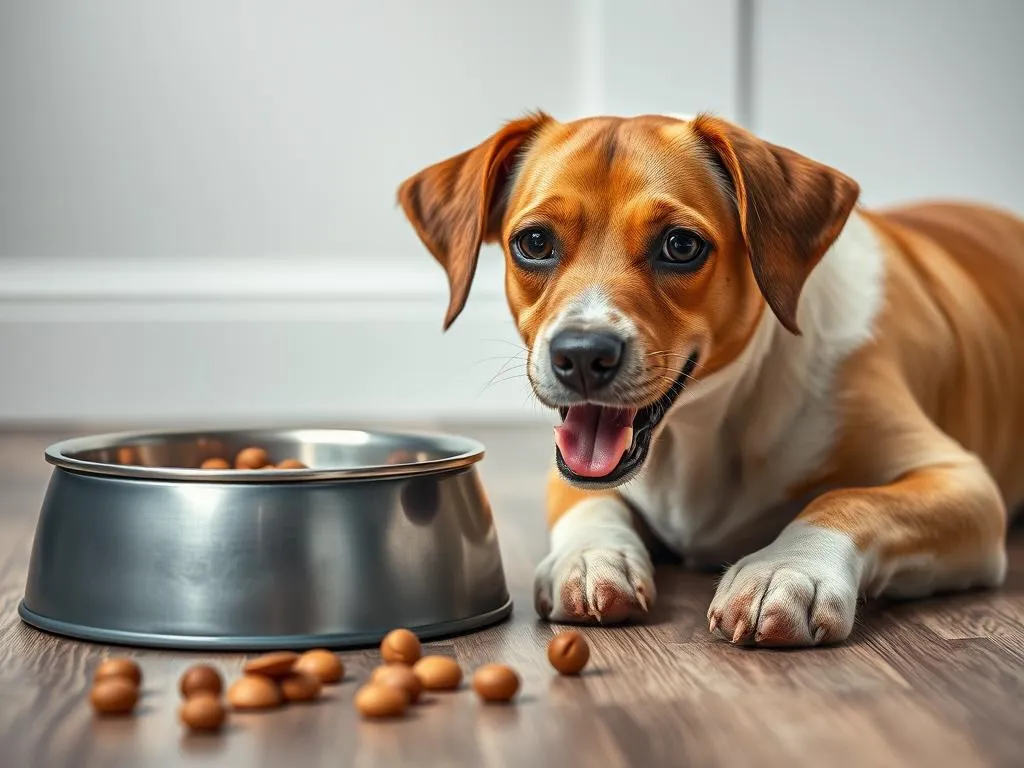
Introduction
Feeding dogs comes with its own set of challenges, especially when it comes to those who have lost their teeth. Dogs with no teeth face significant difficulties in eating, which can lead to nutritional deficiencies if not addressed properly. It’s essential for pet owners to understand the unique needs of these toothless companions and to provide them with the right tools, particularly when it comes to selecting the best dog food bowls. This article explores the most suitable dog food bowls designed specifically for dogs without teeth, ensuring they receive the nutrition they require in a way that is comfortable and manageable.
Understanding the Needs of Dogs Without Teeth
The Impact of Tooth Loss on Nutrition
Tooth loss can severely impact a dog’s ability to chew and consume food. Dogs rely on their teeth to break down food into smaller, digestible pieces. When they lack teeth, they may struggle with traditional dry kibble or harder food options, leading to frustration and potential weight loss. Nutritional needs change, particularly for older dogs or those with dental issues. These dogs often require softer foods that are easier to consume and digest, making it crucial to choose appropriate feeding methods.
Common Health Issues in Toothless Dogs
Poor nutrition in dogs without teeth can lead to various health issues, including malnutrition, obesity, and gastrointestinal problems. Dogs may experience difficulty absorbing essential nutrients if they aren’t able to eat properly. Moreover, the inability to eat comfortably can lead to behavioral changes or anxiety during feeding times. Consulting a veterinarian for individualized dietary needs is vital, as they can recommend specific diets that cater to the unique requirements of toothless dogs.
Essential Features of Dog Food Bowls for Toothless Dogs
Bowl Design Considerations
When selecting the best dog food bowls for dogs with no teeth, design matters. Shallow bowls are often preferable to deep bowls, as they allow for easier access to food without the need for excessive bending or digging. Non-slip bases are also crucial; they help prevent spills and messes during meal times, ensuring a more pleasant experience for both the dog and the owner.
Material Options
The material of the bowl can significantly impact its usability and hygiene. Common materials include:
- Stainless Steel: Durable, easy to clean, and resistant to bacteria.
- Ceramic: Often aesthetically pleasing and heavy enough to stay in place, but can chip or break.
- Plastic: Lightweight and often affordable, but may harbor bacteria if not cleaned regularly.
Each material has its own pros and cons regarding hygiene and durability, so it’s essential to consider which will best suit your dog’s needs.
Size and Shape
The ideal bowl size varies between small/toy breeds and larger breeds. Smaller bowls are easier for toothless dogs to navigate, while larger bowls may be necessary for bigger dogs. Additionally, bowls with wider openings or unique shapes can facilitate easier access to food, making mealtime less stressful.
Top Dog Food Bowls for Dogs with No Teeth
Product Reviews
Here are some of the top-rated dog food bowls for dogs with no teeth, complete with features, pros, cons, and price ranges:
- PetFusion Better Bowl
- Features: Shallow design, non-slip base, stainless steel.
- Pros: Easy to clean, durable, prevents spills.
- Cons: Limited size options.
-
Price Range: $15-$25.
-
Loving Pets Bella Bowls
- Features: Ceramic body, rubber base for stability, dishwasher safe.
- Pros: Attractive design, easy to clean, heavy enough to stay put.
- Cons: Can chip if dropped.
-
Price Range: $20-$30.
-
Outward Hound Fun Feeder Bowl
- Features: Fun design that slows down eating, non-slip base.
- Pros: Engaging for dogs, reduces gulping.
- Cons: Not suitable for all food types.
-
Price Range: $10-$20.
-
Milo’s Kitchen Non-Slip Dog Bowl
- Features: Non-slip bottom, available in various sizes.
- Pros: Affordable, easy to clean.
- Cons: Lighter weight can lead to spills.
-
Price Range: $8-$15.
-
PetSafe Healthy Pet Gravity Feeder
- Features: Gravity-fed design, adjustable height.
- Pros: Continuous food supply, minimizes effort for toothless dogs.
- Cons: May require frequent refilling.
- Price Range: $25-$35.
Comparison Table
| Bowl Name | Material | Size Options | Price Range | Rating |
|---|---|---|---|---|
| PetFusion Better Bowl | Stainless Steel | Medium | $15-$25 | 4.5 |
| Loving Pets Bella Bowls | Ceramic | Small, Medium | $20-$30 | 4.7 |
| Outward Hound Fun Feeder Bowl | Plastic | Small, Medium | $10-$20 | 4.2 |
| Milo’s Kitchen Non-Slip Dog Bowl | Plastic | Medium, Large | $8-$15 | 4.0 |
| PetSafe Healthy Pet Gravity Feeder | Plastic | Adjustable | $25-$35 | 4.6 |
Tips for Feeding Toothless Dogs
Choosing the Right Food
Selecting the appropriate food is crucial for toothless dogs. Soft food options—such as wet canned foods or homemade diets—are often ideal. Brands like Hill’s Science Diet and Royal Canin offer specialized formulas for older dogs or those with dental issues. Always ensure that the food is nutritionally balanced and easy to digest.
Feeding Techniques
Establishing effective feeding practices can make mealtime more enjoyable for toothless dogs. Here are a few tips:
- Serve food at room temperature to enhance aroma and flavor.
- Use smaller portions to prevent overwhelming your dog.
- Encourage a calm environment during feeding to reduce anxiety.
- Monitor your dog’s eating habits and adjust feeding strategies as needed.
Maintaining Hygiene and Cleanliness
Cleaning Your Dog’s Food Bowl
Regularly cleaning your dog’s food bowl is essential for preventing the growth of harmful bacteria. Here are best practices for cleaning various bowl materials:
- Stainless Steel: Wash with hot, soapy water or in the dishwasher.
- Ceramic: Hand wash gently to avoid chipping; can also be dishwasher safe.
- Plastic: Clean with hot, soapy water and ensure thorough rinsing to remove any residue.
Monitoring Your Dog’s Eating Habits
Keep an eye on your dog’s eating habits, as changes can indicate health issues. Signs that may suggest problems include:
- Difficulty eating or refusing food.
- Changes in weight or energy levels.
- Gagging or coughing while eating.
If you notice any concerning behaviors, it’s important to consult with your veterinarian to adjust feeding strategies accordingly.
Conclusion
Choosing the right bowl is crucial for ensuring that dogs without teeth can eat comfortably and receive the nutrition they need. The best dog food bowls for dogs with no teeth are designed with unique features that accommodate their specific challenges. By understanding their needs, selecting appropriate food, and maintaining proper hygiene, you can significantly improve your toothless dog’s quality of life. Always consult with a veterinarian for personalized advice tailored to your dog’s individual health needs.
FAQs
What are the best food options for dogs with no teeth?
Soft food options, such as canned dog food or homemade meals that are easy to chew, are best for dogs without teeth.
How often should I feed my toothless dog?
Most dogs thrive on two meals a day, but it’s essential to consult with your veterinarian for recommendations tailored to your dog’s specific needs.
Can toothless dogs eat dry kibble?
Generally, dry kibble is not suitable for toothless dogs due to its hardness. Opt for softer food alternatives that are easier to consume.
With the right bowl and food, you can ensure that your toothless dog enjoys their meals and maintains a healthy diet.
